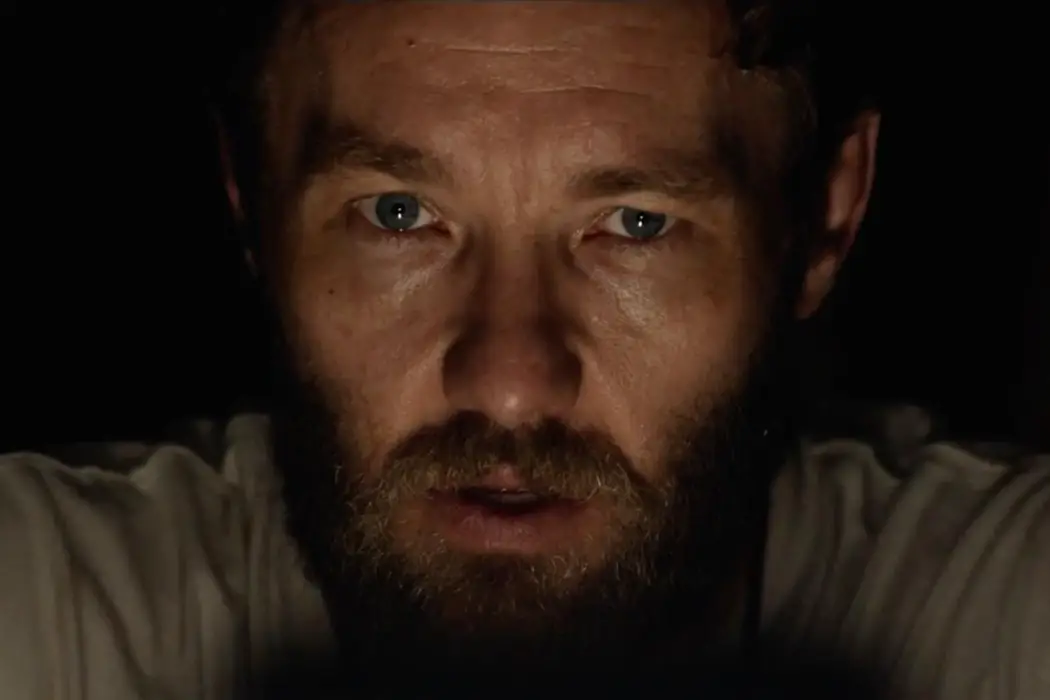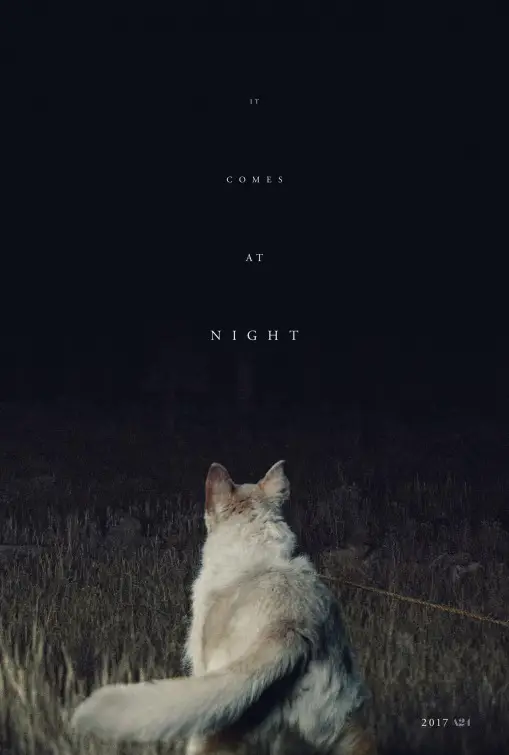IT COMES AT NIGHT And The Troublesome Issue Of Misleading Marketing

Corey is a Welsh wizard and self-proclaimed cinephile with a…
Movie marketing is a fundamental area of a film’s distribution process. Running up to a film’s release, you can expect an onslaught of posters, trailers, interviews and critical reviews that all share a common goal: to get butts in cinema seats. Making money, of course, is part and parcel of filmmaking. Whilst devoted cinephiles would like to believe that filmmakers create films for expressional means, this isn’t always necessarily the case.
And why should it be? Millions of dollars are pumped into projects nowadays and studios want to make their money back, or even better, profit from their productions. Filmmaking nowadays is a business industry. Nothing more. Nothing less.
What I’m trying to get at is that the marketing process is invaluable to a film’s success. If done correctly, a film can soar in the box office. Seats get filled, and so do the pockets of studio executives. But what happens when the entire marketing campaign of a particular film is misleading? Will it have a catastrophic effect on the reception of said film?
We need to look no further than A24’s It Comes At Night to answer this all-important question. Beware: I will be delving into spoiler territory, here. Read at your own peril…
Written and directed by Trey Edward Shults, It Comes At Night tells the story of a family struggling to survive in a barren, post-apocalyptic world where humanity seems close to extinction. What causes the threat is unclear, but when a desperate young family seeks refuge in their home, their need for survival is heightened even more.
Let’s Look At The Trailers…
Off the back from the overwhelming critical success of next big horror. With its first teaser trailer dropping in February earlier this year, it seemed as if the excitement for It Comes At Night was justified. With its malevolent, atmospheric tone seeping through our screens, the first teaser trailer gathered a lot of momentum for the forthcoming film. You can watch it for yourself here:
Three months later, the first official trailer was released, only this time, it was a lot more graphic:
If you were to be watching this trailer upon its initial release you’d have every right to feel excited, and in turn, you could say that A24’s marketing campaign for this film was successful in encouraging you to pay the admission fee to see it.
Fast forward to July and the initial reception for the film was divisive. As of 8th July the film has received a positive 88% critic score on Rotten Tomatoes, but more interestingly, it received a ‘trash’ score of just 44% by audiences.
The question to be asked here is simple: was this wholly underwhelming score from the everyday filmgoer due to their expectations, ones developed through their experiences with the trailers, not being met?
In order to answer this divisive question, it’s necessary to study the trailers in relation to the contrasting themes being addressed in the movie itself.
The Dangers of Unfulfilled Expectations
“The red door is the only way in or out. It stays locked.” It Comes At Night’s first trailer placed an extraordinary amount of emphasis on the enigmatic red door, implanting more questions into the heads of the viewer. Why is it locked? Who opened it? But the questions don’t die there. With Joel Edgerton’s character’s vigorous routine consisting of demands like ‘never go out at night’, it would be normal for the viewer to once again ask why?
But, that’s what trailers should do. They should remain enigmatic and not answer any questions until the film is released for everyone to see. This is what audiences expect, after all…
The second trailer, released only a month later, was no different. It opens with a shot of a dog barking mysteriously at something unseen in the woods. The dog, in fact, was used consistently throughout the entire marketing campaign, including this fantastic, cryptic poster:

So surely there is something lingering about in the woods? Something that doesn’t come out until night? Something, or someone, responsible for the sickness that plagues the land? But what if there isn’t?
It seems as if all three trailers released by A24 had a lot of questions to be answered, but more importantly, they had set expectations that needed to be fulfilled. With the trailers using fast-paced cuts with grotesque imagery intertwined, such as a woman spitting blood into the mouth of Kelvin Harrison Jr.’s character, it became evident that It Comes At Night was going to be a horror that would perhaps use lousy jump-scares as a means for terror, rather than suspense and atmosphere.
However, this turned out to be completely false, and it seemed as if the film was in no rush to meet the expectations set out through the marketing campaign.
The use of jump-scares, thankfully, were scarcely used. Edward Shults did a fantastic job in creating a suspenseful, eerie atmosphere in a way that compliments the barren world that surrounds the characters. The lack of hope and the necessity of survival are evident to the extent that loud, sudden jump-scares are unnecessary. In fact, most of the grotesque imagery presented in the trailers, the woman spitting blood and the sinister-looking old man, were not part of the film’s linearity at all. Those scenes were used as part of Travis’ nightmare sequences, presented expertly through the change of aspect ratio.

But the real implications arise when the film fails to answer any of the questions that the trailers asked. Interestingly enough this was an intentional decision made by Shults, who claimed he ‘never approached it [the film] as a horror movie’. The film, I’d argue, is more of a psychological thriller. It delves into the implications of paranoia and fear of the unknown and uses that to create an organic-feeling malevolence that lurks in the shadows, much like Robert Eggers’ The Witch. But the problem, here, is that such themes weren’t as clearly addressed in the trailers in comparison to the ‘horror’ elements.
Conclusion
This is why I believe It Comes At Night is as divisive as it is. It answers no questions, and it doesn’t intend to. This, alone, is frustrating for viewers, and quite rightly so. There is a certain degree of expectation from audiences in which a film should at least attempt to make sense of the events in which the characters find themselves. There is no coherent explanation for why there is a sickness that plagues their world, nor is there an answer to what the dog was mysteriously barking at. There seems to be no unknown entity, or monster, that is responsible for the catastrophic destruction of mankind.
But should there be? To what extent should the expectations that audiences hold be fulfilled? For most filmmakers a narrative shouldn’t always be coherent, questions shouldn’t always be answered. Auteurs like Denis Villeneuve and Krzysztof Kieslowski use ambiguity in a way that doesn’t always meet the expectations of an average audience, and has resulted in scepticism from many filmgoers.
But their talents are ever present in their works, and Shults’ film is on par with such cinematic brilliance. The issue, however, is that A24’s marketing campaign was entirely misleading. They set up the expectations for their target audience, and when those seats were filled, they had the wrong people sitting in front of the big screen.
What do you think? Is It Comes At Night getting the divisive reception that it deserves? Or did you enjoy it? Let us know in the comments below!
Does content like this matter to you?
Become a Member and support film journalism. Unlock access to all of Film Inquiry`s great articles. Join a community of like-minded readers who are passionate about cinema - get access to our private members Network, give back to independent filmmakers, and more.
Corey is a Welsh wizard and self-proclaimed cinephile with a love for all things film related, who holds a degree in Film and Media Communication. Ooo, fancy.













